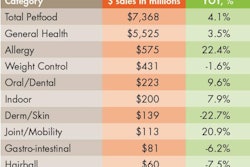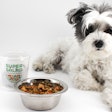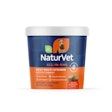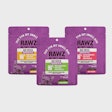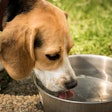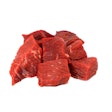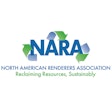The Association of American Feed Control Officials (AAFCO) held its annual meeting on July 24–26, 2014, in Sacramento, California, USA. As always, several controversial issues kept the discussions lively.
Approval by the full AAFCO membership during the opening session is the final step for proposals brought forth by the various committees through the Board of Directors. One matter of healthy debate this time was the vote to accept proposed definitions for various pea fractions (pea flour, pea protein, pea starch and pea fiber), which would open the way for their sanctioned use in petfood products. However, the new definitions as brought to the vote limit the processing of these ingredients to dry-milling only. Because much of the product on the market is in fact wet-milled and hence would not fall under the definitions, some attendees expressed concern regarding the fairness and necessity of this distinction.
In the end, the definitions passed, with the understanding that interested parties are free to submit proposals to revise the definitions to be more inclusive. In fact, petitions to accomplish that are already in the works. In the interim, though, it is prudent for petfood manufacturers intending to use these ingredients to ensure that they conform to the new definitions.
The full membership also accepted the revisions to AAFCO Dog and Cat Food Feeding Protocols, one means by which a petfood manufacturer can substantiate nutritional adequacy. However, the other means (the AAFCO Dog and Cat Food Nutrient Profiles) remains in the pipeline. The Pet Food Committee did accept the revisions to the Profiles with the controversial distinction in maximum calcium concentrations based on body size of dogs moving forward.
As it stands, the maximum calcium for products that could be fed to large size (greater than 70 pounds adult weight) puppies will be limited to 1.8% dry matter. This would include any "all life stages" product that does not expressly indicate the size of the dog for which it is intended. For products expressly intended for growth, reproduction or all life stages of small or medium dogs, and for maintenance of adult dogs of any size, the maximum calcium level will remain at 2.5% dry matter.
To effectively incorporate this size-based distinction in the Dog Food Nutrient Profiles, the AAFCO Model Pet Food Regulations will require modification. A working group has been assigned the task. It is also charged with recommending a time frame for compliance with the revised numbers in the Profiles.
Less progress was made on other items on the Pet Food Committee's agenda. Due to the resignations of key personnel, new working group chairs were named to head up maintenance of the Business of Pet Food website and to continue work on a new edition of the AAFCO Pet Food & Specialty Pet Food Labeling Guide. The content of the new consumer-oriented "AAFCO Talks Pet Food" website has been written, but still must be reviewed by the Committee and edited for style before going live.
No progress was reported for the Carbohydrate Working Group. There was some discussion regarding revision to the Guidelines for Tartar Control Claims, but due to time constraints the topic was tabled for discussion at the next meeting. Several other agenda items were not discussed.
In the Ingredient Definitions Committee, a revision to the definition of Yucca schidigera extract was accepted. As amended, it would allow for claims regarding fecal odor control in foods for certain specialty pets (rats, mice, hamsters, gerbils and hedgehogs) as it now does for poultry and livestock feeds. The maximum inclusion rate remains at 125 ppm. Importantly, while it can still be added as a flavor to dog and cat foods, the new definition does NOT provide for odor control claims for these species.
Most of the other ingredients discussed by the Committee had to do with procedural matters (e.g., moving tentative definitions to official status), or have little impact on the petfood manufacturer. A working group looking into revisions of the meat meal and meat & bone meal definitions was disbanded due to lack of a chair. However, also accepted by the Ingredient Definitions Committee was a definition for zinc hydroxychloride as a new trace mineral source.
The only item on the Model Bill & Regulations Committee agenda pertaining to petfood was with respect to the AAFCO Dog and Cat Food Nutrient Profiles, which was not discussed due to the further action needed by the Pet Food Committee. When the Pet Food Committee comes forth with its proposals as to other changes to the Model Pet Food Regulations needed to incorporate the revised Profiles and presents a suggested time frame for implementation, the Model Bill & Regulations Committee will consider the proposed changes to the Profiles. It may take some time before these revisions (initiated in 2007) are enacted.





